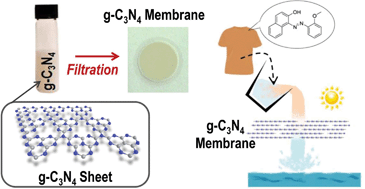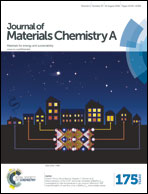Self-catalytic membrane photo-reactor made of carbon nitride nanosheets†
Abstract
Solar-driven photo-oxidation is a very attractive and efficient technique for chemical conversion of organic dyes in water into non-hazardous compounds, but it requires a catalyst in order to overcome the barrier of oxidation degradation. In this study we use a membrane photo-reactor (MPR) made of nanosheets of graphitic carbon nitride (g-C3N4), assembled by vacuum filtration. The membrane was characterized by X-Ray Diffraction (XRD), Nuclear Magnetic Resonance (NMR), electron microscopy and IR spectroscopy. Photo-degradation studies show that the membranes are very efficient in the degradation of Sudan orange G, rhodamine 110 and methylene blue. As the catalyst is a porous laminate, the reactant can flow through the pores of the membrane. Because the space between g-C3N4 nanosheets is comparable to the size of the dyes, the probability of the reactants to be close to the catalyst is enhanced, making the reaction very efficient.



 Please wait while we load your content...
Please wait while we load your content...